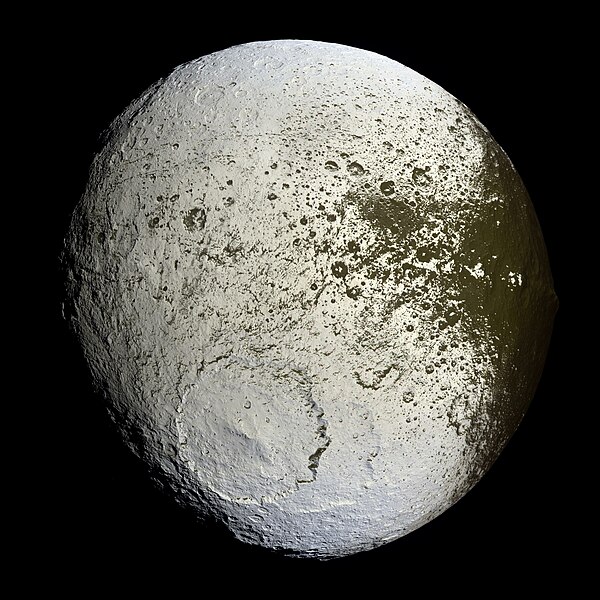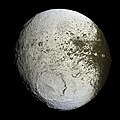File:Iapetus as seen by the Cassini probe - 20071008.jpg
Appearance
(Redirected from File:PIA08384.jpg)

Size of this preview: 600 × 600 pixels. Other resolutions: 240 × 240 pixels | 480 × 480 pixels | 768 × 768 pixels | 1,024 × 1,024 pixels | 2,048 × 2,048 pixels | 4,032 × 4,032 pixels.
Original file (4,032 × 4,032 pixels, file size: 6.22 MB, MIME type: image/jpeg)
| This is a featured picture, which means that members of the community have identified it as one of the finest images on the English Wikipedia, adding significantly to its accompanying article. If you have a different image of similar quality, be sure to upload it using the proper free license tag, add it to a relevant article, and nominate it. |
| This image was selected as picture of the day on the English Wikipedia for February 28, 2008. |
File history
Click on a date/time to view the file as it appeared at that time.
| Date/Time | Thumbnail | Dimensions | User | Comment | |
|---|---|---|---|---|---|
| current | 18:07, 12 December 2018 |  | 4,032 × 4,032 (6.22 MB) | Kesäperuna | 100% JPEG quality from full quality TIFF, slightly cropped to be more centered. |
| 09:18, 9 October 2007 |  | 4,100 × 4,100 (1.56 MB) | Startaq | {{Information |Description = Cassini captures the first high-resolution glimpse of the bright trailing hemisphere of Saturn's moon Iapetus. This false-color mosaic shows the entire hemisphere of Iapetus (1,468 kilometers, or 912 miles across) visible fro |
File usage
The following 34 pages use this file:
- Discovery and exploration of the Solar System
- Engelier
- Gerin (crater)
- Iapetus (moon)
- Impact crater
- List of largest craters in the Solar System
- Naming of moons
- Planetary-mass moon
- Roncevaux Terra
- Sidera Lodoicea
- Space Science Institute
- Talk:Solar System/Archive 7
- User:ArkHyena/Drafts/Draftspace2
- User:DivisionPrecision
- User:Fotaun
- User:PlanetUser
- User:Rfassbind/sandbox/Leadimage compilations
- User talk:Adrian de Physics/Archive 1
- User talk:MER-C/archives/19
- User talk:MER-C/archives/21
- Wikipedia:Featured picture candidates/October-2007
- Wikipedia:Featured picture candidates/PIA08384
- Wikipedia:Featured pictures/Space/Looking out
- Wikipedia:Featured pictures thumbs/08
- Wikipedia:Picture of the day/February 2008
- Wikipedia:WikiProject Astronomy/Recognized astronomy content
- Wikipedia:WikiProject Astronomy/Recognized content
- Wikipedia:Wikipedia Signpost/2007-10-22/Features and admins
- Wikipedia:Wikipedia Signpost/2007-10-22/SPV
- Wikipedia:Wikipedia Signpost/Single/2007-10-22
- Template:POTD/2008-02-28
- Portal:Solar System
- Portal:Solar System/Selected picture
- Portal:Solar System/Selected picture/Week 5 2007
Global file usage
The following other wikis use this file:
- Usage on af.wikipedia.org
- Usage on an.wikipedia.org
- Usage on ar.wikipedia.org
- Usage on ary.wikipedia.org
- Usage on arz.wikipedia.org
- Usage on ast.wikipedia.org
- Usage on az.wikipedia.org
- Usage on ba.wikipedia.org
- Usage on be.wikipedia.org
- Usage on bg.wikipedia.org
- Usage on bn.wikipedia.org
- Usage on bn.wikibooks.org
- Usage on bs.wikipedia.org
- Usage on ca.wikipedia.org
- Usage on ckb.wikipedia.org
- Usage on cs.wikipedia.org
- Usage on cv.wikipedia.org
- Usage on cy.wikipedia.org
- Usage on de.wikipedia.org
View more global usage of this file.




